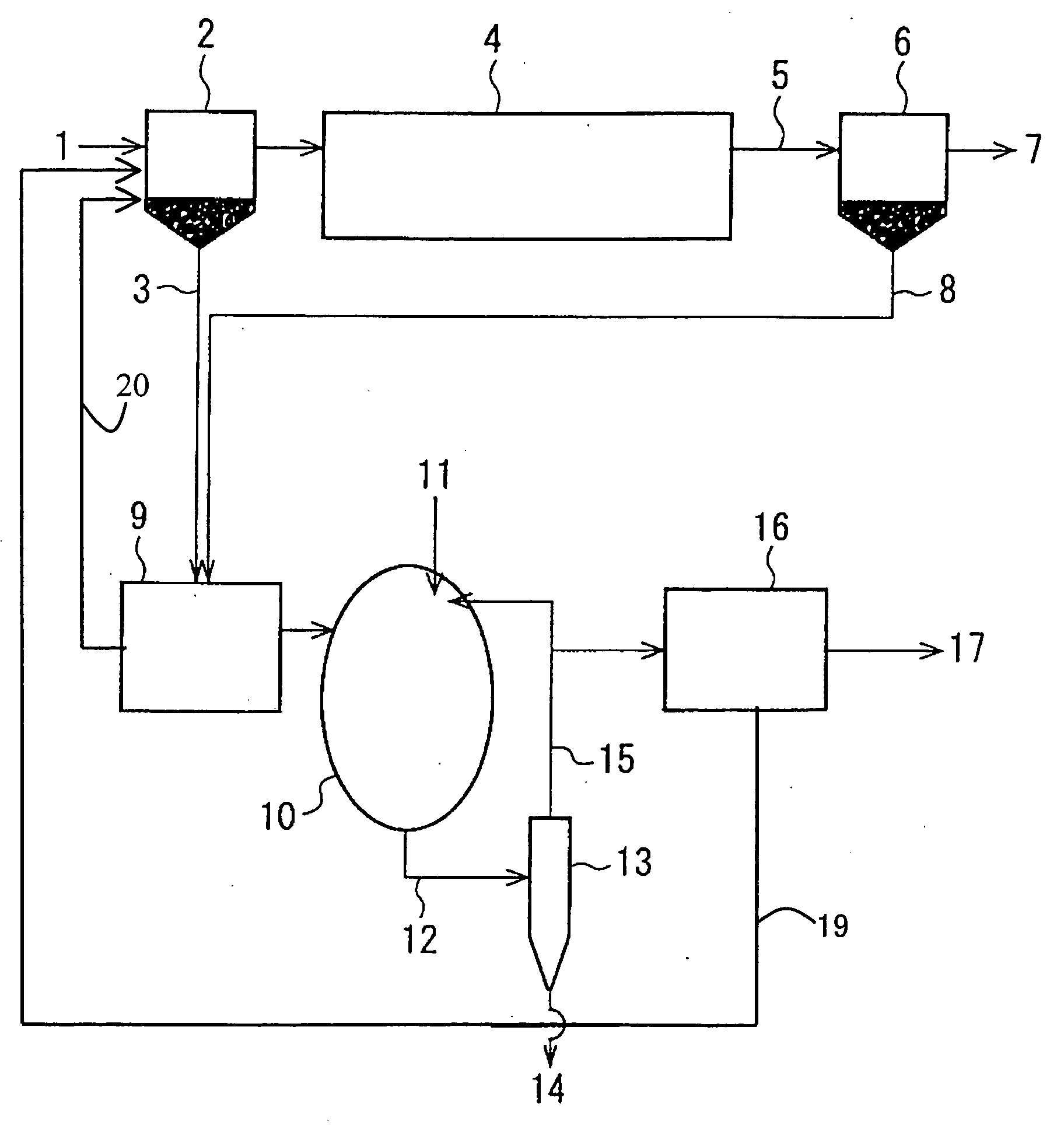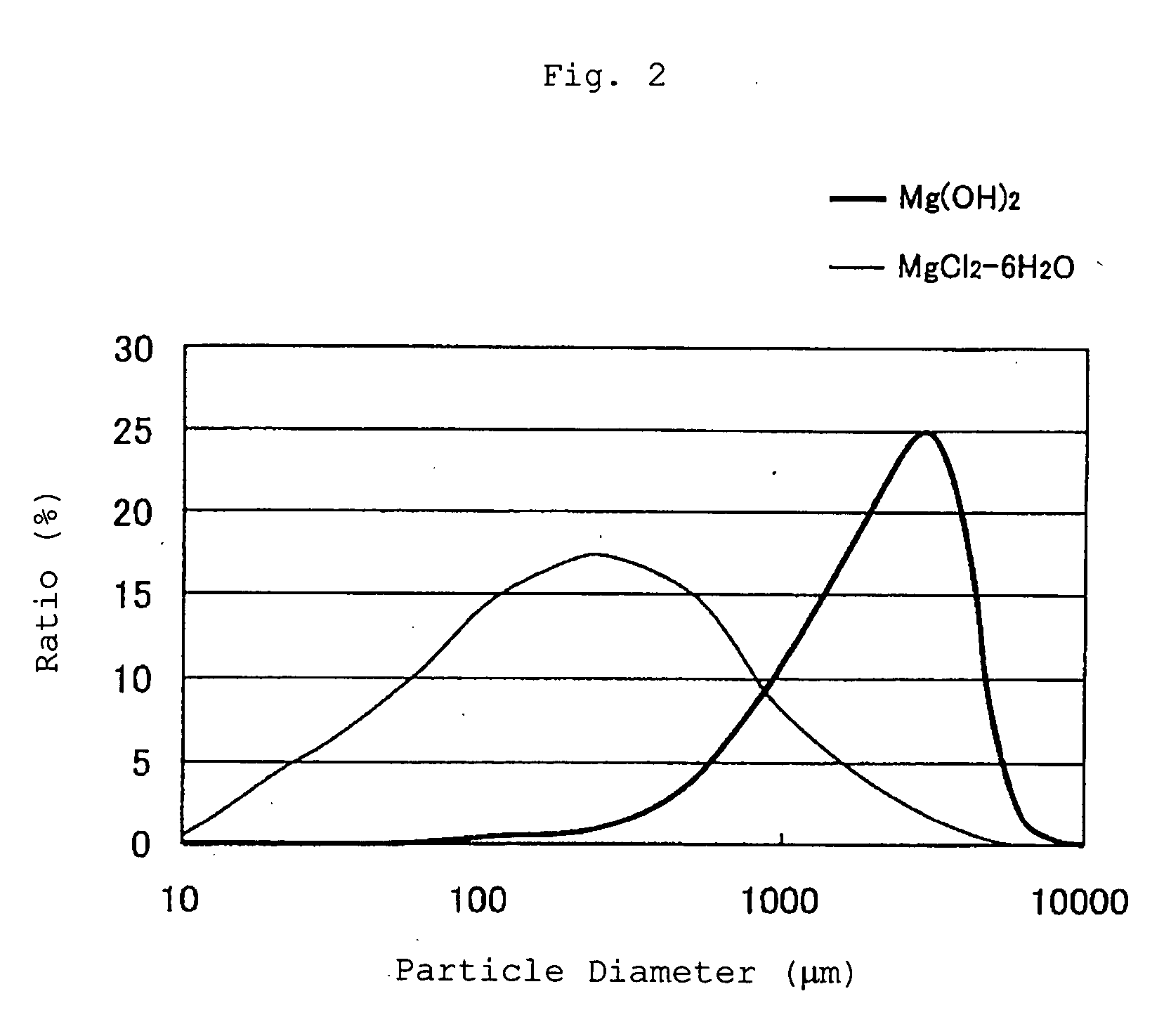Method of treating organic wastewater and sludge and treatment apparatus therefor
a technology of organic wastewater and treatment apparatus, which is applied in the field of system of treating organic wastewater or sludge, can solve the problems of high running cost including chemical cost, complication of treatment steps, and inability to achieve stable treatment performance, and achieve the effect of improving and stabilizing the removal ratio of nitrogen, enhancing the purity of the formed map, and reducing the amount of chemicals
- Summary
- Abstract
- Description
- Claims
- Application Information
AI Technical Summary
Benefits of technology
Problems solved by technology
Method used
Image
Examples
example 1
[0048] In the present example, the experiment of anaerobic digestion and formation and recovery of MAP was carried out with the use of the sludge in sewage plant “A” by an apparatus having a constitution as shown in FIG. 1. The first settled sludge 3 in the primary sedimentation tank 2 and the excess sludge 8 in the secondary settling tank 6 were mixed at a ratio of about 1:1, and subsequently subjected to medium temperature anaerobic digestion treatment in an oval anaerobic digestion tank 10 with a residence time of 25 days. As the hardly soluble magnesium source 11 for forming MAP in the anaerobic digestion tank 10, 35% magnesium hydroxide was diluted with water to a concentration of 10%, and then mixed with the sludge to be introduced, and the resulting mixed sludge was introduced into the anaerobic digestion tank 10.
[0049] The amount of the magnesium hydroxide added was adjusted so as to render the Mg concentration in the anaerobic digestion tank in the range of 10 to 30 mg / L. ...
example 2
[0055] Underground water (having a Mg concentration of 48 mg / L) collected near the sewage plant was used as the diluting water for the 35% magnesium hydroxide, and the sludge in sewage plant “A” as used in Example 1 was subjected to the treatment using the diluting water in an amount of 100 L per 1 m3 of the introduced sludge. The amount of the magnesium hydroxide used was reduced from 1,080 g / m3 of sludge to 970 g / m3 of sludge, and the cost of the chemical used could be reduced. It has been found that by effectively using underground water containing magnesium, MAP could be recovered at a lower cost.
example 3
[0056] In the present Example, the experiment of acid fermentation-anaerobic digestion and formation and recovery of MAP was carried out with the use of the same sludge of sewage plant “A” as in Example 1 by an apparatus having a constitution as shown in FIG. 3. The first settled sludge 3 in the primary sedimentation tank 2 and the excess sludge 8 in the secondary settling tank 6 were mixed at a ratio of about 1:1 and concentrated by a centrifugal concentrator 9. The concentrated sludge was introduced into an acid fermentor 32. Into the acid fermentor 32, the MAP removed sludge after removal of MAP particles from the digested sludge was also introduced. The acid fermentor 32 was heated at a water temperature of 40° C., and the inside of the fermentor was mixed by an agitator and the pH in the fermentor was controlled to 5.0 to 5.5. The pH was controlled by controlling the flow rate of the MAP removed sludge 15 and the volume of the fermentor was determined so as to secure a hydrauli...
PUM
| Property | Measurement | Unit |
|---|---|---|
| Concentration | aaaaa | aaaaa |
Abstract
Description
Claims
Application Information
 Login to View More
Login to View More - R&D
- Intellectual Property
- Life Sciences
- Materials
- Tech Scout
- Unparalleled Data Quality
- Higher Quality Content
- 60% Fewer Hallucinations
Browse by: Latest US Patents, China's latest patents, Technical Efficacy Thesaurus, Application Domain, Technology Topic, Popular Technical Reports.
© 2025 PatSnap. All rights reserved.Legal|Privacy policy|Modern Slavery Act Transparency Statement|Sitemap|About US| Contact US: help@patsnap.com



